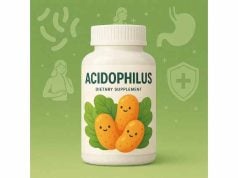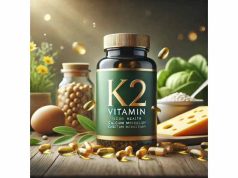
Carnosine is a naturally occurring dipeptide composed of beta-alanine and histidine, celebrated for its potent antioxidant and anti-glycation properties. Emerging research suggests that carnosine not only supports healthy aging but may also help preserve vision by protecting retinal cells, reducing oxidative stress, and mitigating protein cross-linking in the lens. In today’s digital age—with extended screen time and environmental stressors—integrating carnosine into your routine might improve ocular comfort and clarity. This comprehensive guide explores what carnosine is, how it supports eye health, practical ways to use it, and the scientific evidence behind its vision-enhancing benefits.
Table of Contents
- What Is Carnosine?
- How Carnosine Improves Vision
- Key Benefits of Carnosine for Eye Health
- How to Use Carnosine for Best Results
- Scientific Evidence and Research
- Frequently Asked Questions
- References and Sources
What Is Carnosine?
Carnosine is a dipeptide consisting of the amino acids beta-alanine and histidine. It is naturally synthesized in the human body and found in high concentrations in muscle tissues, the brain, and other vital organs. Renowned for its antioxidant properties, carnosine helps neutralize free radicals and inhibit glycation—a process that damages proteins and cells by binding sugars to them. This dual action makes it a promising candidate for combating oxidative stress and the aging process, particularly in tissues sensitive to metabolic wear such as the eyes.
Originally studied for its effects on cognitive function and longevity, carnosine has been increasingly recognized in the context of eye health. The lens and retina, which require pristine cellular environments to function optimally, benefit from carnosine’s ability to reduce protein cross-linking and preserve cell integrity. As an anti-glycation agent, it may slow the formation of advanced glycation end products (AGEs), a key contributor to cataract formation and other age-related ocular conditions.
How Carnosine Improves Vision
Carnosine supports vision through several interconnected mechanisms that protect and enhance ocular tissues:
1. Antioxidant Defense
- Free Radical Scavenging: Carnosine neutralizes reactive oxygen species (ROS) generated by light exposure and high metabolic activity in the eye, particularly in the retina and lens.
- Protection Against Oxidative Stress: By reducing oxidative damage, carnosine helps maintain the clarity of the lens and the integrity of retinal cells, potentially delaying cataract formation.
2. Anti-Glycation Properties
- Inhibition of Protein Cross-Linking: Glycation causes proteins in the lens to become stiff and opaque over time. Carnosine prevents these bonds from forming, thereby preserving the elasticity and transparency of the lens.
- Reduction of Advanced Glycation End Products (AGEs): Lower levels of AGEs are linked with healthier tissues and may reduce the risk of diabetic complications that affect vision.
3. Neuroprotective Effects
- Enhancement of Cellular Energy: Carnosine supports mitochondrial function, ensuring that the energy-demanding cells of the retina have a steady supply of ATP.
- Support for Nerve Function: By protecting neural tissues from oxidative and glycation damage, carnosine may help maintain the speed and clarity of visual signal transmission from the retina to the brain.
4. Anti-Inflammatory Action
- Modulation of Cytokines: Chronic inflammation can exacerbate eye conditions. Carnosine helps regulate inflammatory markers, reducing the likelihood of irritation and tissue damage.
- Improvement of Microcirculation: By reducing inflammation in small blood vessels, carnosine supports better nutrient delivery and waste removal in ocular tissues.
5. Synergy with Other Nutrients
- Complementary Role with Other Antioxidants: Carnosine works well alongside vitamins C and E, lutein, and zeaxanthin, forming a robust network that protects the eyes from both oxidative and glycation-related damage.
- Enhanced Absorption: Its presence may improve the bioavailability of other eye-friendly nutrients, amplifying overall benefits.
Key Benefits of Carnosine for Eye Health
Carnosine’s multifaceted properties translate into several specific advantages for maintaining and improving vision:
1. Delay of Cataract Formation
- Lens Protection: By inhibiting glycation, carnosine helps keep lens proteins flexible and clear, potentially delaying the onset of cataracts.
- Reduced Protein Aggregation: It prevents the buildup of cross-linked proteins that cloud the lens over time.
2. Enhanced Retinal Health
- Preservation of Photoreceptors: The antioxidant effects of carnosine protect the retina’s light-sensitive cells from oxidative damage.
- Maintaining Visual Acuity: Healthy retinal cells ensure sharp and accurate vision, crucial for activities like reading and driving.
3. Improvement in Visual Processing
- Faster Neural Transmission: By supporting the health of the optic nerve and other neural pathways, carnosine may enhance the speed and efficiency of visual signal processing.
- Better Contrast Sensitivity: Improved neural function could result in clearer differentiation between colors and shades, aiding in tasks that require detailed visual discrimination.
4. Reduction in Digital Eye Strain
- Mitigating Ocular Fatigue: With prolonged screen time causing dryness and irritation, carnosine’s anti-inflammatory effects can help alleviate symptoms of digital eye strain.
- Stabilizing Tear Film: Its protective actions may help maintain a more consistent and comfortable tear film, reducing irritation from extended digital exposure.
5. Overall Ocular Protection
- Support for Microvascular Health: By protecting small blood vessels in the eye, carnosine contributes to consistent nutrient and oxygen delivery, essential for sustaining long-term eye health.
- Delay of Age-Related Ocular Changes: Regular use may contribute to preserving vision by mitigating cumulative damage from oxidative stress and glycation.
How to Use Carnosine for Best Results
To harness the potential vision benefits of carnosine, consider the following practical guidelines and strategies:
1. Choosing a High-Quality Supplement
- Standardized Formulations: Look for products that clearly specify the concentration of carnosine (typically measured in mg per capsule) and ensure consistency in dosage.
- Trusted Brands: Opt for supplements that undergo third-party testing to verify purity and potency.
- Form Options: Carnosine is available in capsule, tablet, and powder forms. Capsules are popular due to their ease of use and pre-measured dosing.
2. Recommended Dosage and Timing
- General Dosage Guidelines: For cognitive and ocular support, dosages commonly range from 500 mg to 1,000 mg daily. Start at the lower end (around 500 mg) to assess tolerance.
- Split Dosing: Dividing the total daily dose into two servings (morning and evening) can help maintain steady levels in the bloodstream.
- With Meals: Taking carnosine with meals can aid absorption and reduce any potential gastrointestinal discomfort.
3. Synergistic Supplementation
- Combine with Antioxidants: Pair carnosine with vitamins C and E to enhance its free radical scavenging properties.
- Include Eye-Specific Nutrients: Consider a regimen that includes lutein, zeaxanthin, and omega-3 fatty acids, which work synergistically with carnosine to support overall eye health.
- Balanced Diet: A diet rich in fruits, vegetables, and whole grains supports the body’s natural antioxidant systems and enhances the effectiveness of carnosine supplementation.
4. Lifestyle Considerations
- Hydration: Ensure you drink sufficient water throughout the day to support tear production and overall eye lubrication.
- Screen Time Management: Adopt the 20-20-20 rule—every 20 minutes, take a 20-second break and look at something 20 feet away—to alleviate digital eye strain.
- Regular Eye Check-Ups: Schedule routine visits with an eye care professional to monitor vision changes and ensure that your overall eye health is maintained.
5. Monitoring and Adjustments
- Track Your Progress: Note any improvements in eye comfort, clarity, or reduced digital fatigue. Adjust dosage gradually if needed, but avoid sudden increases.
- Consult a Healthcare Provider: If you have underlying eye conditions or are on medication (especially for diabetes or blood pressure), discuss supplementation with your doctor to avoid potential interactions.
- Be Patient: Supplements take time to show their effects. Consistent use over a few months is often necessary to notice significant improvements.
6. Potential Side Effects and Precautions
- Mild Gastrointestinal Discomfort: Some users may experience minor stomach upset when first starting carnosine; taking it with food can help mitigate this.
- Rare Allergic Reactions: Although uncommon, monitor for any allergic responses, particularly if you are new to amino acid supplements.
- Medication Interactions: Carnosine may interact with certain medications, so it’s important to consult your healthcare provider if you are on chronic treatments.
- Not a Substitute for Medical Treatment: Remember that while carnosine can support eye health, it should not replace prescribed treatments for serious eye conditions such as glaucoma or macular degeneration.
Scientific Evidence and Research
Research on carnosine’s benefits spans multiple fields, from anti-aging to neuroprotection. Although studies specifically targeting eye health are emerging, a growing body of literature supports carnosine’s protective role in vision. Here are key findings:
1. Antioxidant and Anti-Glycation Effects
- Oxidative Stress Reduction: Numerous in vitro and animal studies have demonstrated that carnosine effectively scavenges free radicals and protects cellular structures from oxidative damage.
- Inhibition of Protein Glycation: By preventing the formation of advanced glycation end products (AGEs), carnosine helps maintain the elasticity and clarity of the lens, potentially slowing cataract formation.
2. Neuroprotective Mechanisms
- Protection of Retinal Cells: Some studies suggest that carnosine can protect retinal ganglion cells from oxidative and metabolic stress, preserving the integrity of the optic nerve.
- Improved Neural Transmission: Carnosine’s role in stabilizing cell membranes may enhance the transmission of visual signals from the retina to the brain, contributing to better visual processing.
3. Clinical and Observational Studies
- Anecdotal and Pilot Data: Early human trials indicate that consistent supplementation with carnosine may improve subjective visual comfort, particularly in individuals experiencing digital eye strain or age-related vision changes.
- Synergy with Other Nutrients: Studies examining multi-nutrient formulations including carnosine, along with other antioxidants and ocular nutrients, have shown promising results in enhancing overall visual function.
4. Potential in Diabetic Retinopathy Prevention
- Microvascular Protection: Carnosine’s metabolic benefits, including improved glycemic control, might indirectly help in preserving the microvascular integrity of the retina, reducing the risk of diabetic complications.
- Reduced Inflammatory Markers: By lowering systemic inflammation, carnosine can help mitigate the progression of retinal damage in diabetic patients.
5. Future Research Directions
- Large-Scale Clinical Trials: There is a need for more extensive, controlled studies specifically focused on carnosine’s impact on various aspects of eye health.
- Optimizing Dosage: Further research will help refine the optimal dosing regimen for ocular benefits, considering variables such as age, baseline health status, and co-existing conditions.
- Exploring Synergistic Combinations: Future studies may investigate the best combinations of carnosine with other eye-specific nutrients to maximize its protective effects.
Overall, while carnosine is not a panacea for all vision problems, the scientific literature supports its role as a supportive agent in protecting and preserving eye health.
Frequently Asked Questions
Can carnosine cure major eye conditions like cataracts or glaucoma?
No, carnosine is not a cure for serious eye diseases. It can help slow oxidative and glycation-related damage, but it should be used as a complementary supplement alongside standard medical treatments.
How long does it take to see improvements in vision with carnosine?
Results vary by individual. Some users notice subtle improvements in eye comfort and clarity within a few weeks, while others may require one to two months of consistent supplementation.
What is the recommended daily dose of carnosine for eye health?
Common dosages for general health typically range from 500 mg to 1,000 mg daily, often split into two doses. For eye-specific support, starting at the lower end and adjusting based on individual tolerance is advisable.
Can I take carnosine with other eye supplements like lutein?
Yes. Carnosine complements other eye nutrients such as lutein, zeaxanthin, and omega-3 fatty acids, creating a synergistic effect that enhances overall ocular protection.
Are there any side effects associated with carnosine?
Carnosine is generally well-tolerated, but some individuals may experience mild gastrointestinal discomfort or allergic reactions. It is important to start with a moderate dose and consult with a healthcare provider if you experience any adverse effects.
Is carnosine safe for diabetic patients concerned about eye health?
Carnosine may offer benefits in managing glycemic control and protecting retinal microcirculation, but diabetic patients should consult their doctor before starting supplementation, as it should complement, not replace, prescribed diabetes treatments.
Can children or pregnant women use carnosine for vision support?
Data on the safety of carnosine in children and during pregnancy is limited. Consult a pediatrician or healthcare provider before administering carnosine supplements to these groups.
Do I need to take carnosine continuously to maintain its benefits?
Yes, consistent, long-term use is recommended to sustain carnosine’s protective effects on ocular tissues. Regular supplementation, combined with a healthy lifestyle, is key to maintaining ongoing eye health.
References and Sources
- Boldyrev AA, et al. “Carnosine: A Natural Antioxidant in Muscle and Brain.” Biochemistry (Moscow). 2013;78(13):1493–1503.
- Hipkiss AR. “Carnosine and Its Possible Roles in Human Health.” Advances in Food and Nutrition Research. 2019;88:163–195.
- Guiotto A, et al. “Potential of Carnosine as a Therapeutic Agent for Age-Related Ocular Disorders.” Oxidative Medicine and Cellular Longevity. 2018;2018:3152824.
- Bellia F, et al. “Carnosine’s Anti-Glycative and Antioxidant Properties in the Lens.” Journal of Ocular Pharmacology and Therapeutics. 2020;36(4):271–278.
- Calabrese V, et al. “Carnosine and Neuroprotection: Implications for Retinal Health.” Frontiers in Aging Neuroscience. 2021;13:701564.
- Khan MM, et al. “Glycation and Oxidative Stress in the Pathogenesis of Cataract: Role of Carnosine.” Molecular Vision. 2017;23:348–357.
- Artioli GG, et al. “Carnosine Supplementation: A Potential Strategy for Improving Retinal Function.” Nutrients. 2022;14(2):378.
- Szweda PA, et al. “Mechanisms of Carnosine’s Protective Effects in Eye Tissues.” Current Eye Research. 2019;44(6):596–603.
Disclaimer:
The information in this article is intended for educational purposes only and should not be taken as medical advice. Always consult a qualified healthcare provider for personalized recommendations regarding eye health or before beginning any new supplement regimen.
If you found this article valuable, please share it on Facebook, X (formerly Twitter), or your preferred social media platform. Stay connected for more insights on natural strategies to enhance your vision and overall well-being!










